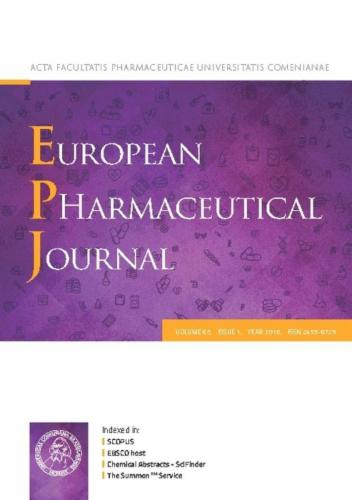Advancing hepatic clearance prediction across in vitro, ex situ, and in vivo systems to facilitate in vitro-to-in vivo extrapolation
IF 4.7
3区 医学
Q1 PHARMACOLOGY & PHARMACY
引用次数: 0
Abstract
Background
With rapid pharmaceutical development, hepatic clearance has become crucial for assessing drug metabolism. Rapid and effective estimation of hepatic clearance can be achieved through in vitro-to-in vivo extrapolation (IVIVE) without complicated animal experiments. However, this well-established method frequently leads to significant underestimation, limiting its clinical applicability.
Methods
We propose a series of optimizations to address these limitations. Metoprolol was selected as the target drug. In vitro microsomal assays, ex situ isolated perfused rat liver (IPRL) experiments, and in vivo pharmacokinetic studies in rats were performed to systematically investigate the factors that contribute to IVIVE deviation.
Results
To rectify the previously overlooked errors in IVIVE, we incorporated the apparent volume of distribution to refine the estimation of the intrinsic hepatic clearance derived from the Michaelis–Menten equation. Additionally, a more cytosolic-like environment was provided for microsome experiments to better simulate in vivo reactions. By integrating the findings from the IPRL experiments and pharmacokinetic studies, we identified the optimal hepatic clearance model from the perspective of liver drug metabolism-driving concentrations. Ultimately, our results indicate that the IVIVE-predicted hepatic clearance increased from the previously underestimated value of 28.1 to 70 mL/min/kg, which is closer to the in vivo value of 73.9 mL/min/kg. Moreover, the HEPES-KOH buffer system exhibits superior performance under these conditions.
Conclusions
We anticipate that the improved IVIVE method will provide a more comprehensive and accurate framework for predicting hepatic clearance, paving the way for its application in clinical drug dosage adjustments and new drug development.

推进肝清除预测跨越体外,非原位和体内系统,以促进在体外到体内的外推。
背景:随着药物的快速发展,肝脏清除率已成为评估药物代谢的关键。通过体外-体内外推法(IVIVE)可以快速有效地估计肝脏清除率,而无需复杂的动物实验。然而,这种行之有效的方法经常导致严重低估,限制了其临床适用性。方法:我们提出了一系列的优化来解决这些限制。选择美托洛尔作为靶药。通过体外微粒体测定、离体离体灌注大鼠肝脏(IPRL)实验和大鼠体内药代动力学研究,系统地探讨了导致IVIVE偏差的因素。结果:为了纠正先前在IVIVE中被忽视的错误,我们将表观体积分布纳入Michaelis-Menten方程,以改进对内在肝脏清除率的估计。此外,为微粒体实验提供了更类似细胞质的环境,以更好地模拟体内反应。通过整合IPRL实验和药代动力学研究结果,我们从肝脏药物代谢驱动浓度的角度确定了最佳的肝脏清除模型。最终,我们的研究结果表明,ivive预测的肝脏清除率从先前低估的28.1 mL/min/kg增加到~ 70 mL/min/kg,更接近体内值73.9 mL/min/kg。此外,HEPES-KOH缓冲体系在这些条件下表现出优异的性能。结论:改进后的IVIVE方法将为预测肝脏清除率提供更全面、准确的框架,为其在临床药物剂量调整和新药开发中的应用奠定基础。
本文章由计算机程序翻译,如有差异,请以英文原文为准。
求助全文
约1分钟内获得全文
求助全文
来源期刊
CiteScore
9.60
自引率
2.20%
发文量
248
审稿时长
50 days
期刊介绍:
The journal publishes research articles, review articles and scientific commentaries on all aspects of the pharmaceutical sciences with emphasis on conceptual novelty and scientific quality. The Editors welcome articles in this multidisciplinary field, with a focus on topics relevant for drug discovery and development.
More specifically, the Journal publishes reports on medicinal chemistry, pharmacology, drug absorption and metabolism, pharmacokinetics and pharmacodynamics, pharmaceutical and biomedical analysis, drug delivery (including gene delivery), drug targeting, pharmaceutical technology, pharmaceutical biotechnology and clinical drug evaluation. The journal will typically not give priority to manuscripts focusing primarily on organic synthesis, natural products, adaptation of analytical approaches, or discussions pertaining to drug policy making.
Scientific commentaries and review articles are generally by invitation only or by consent of the Editors. Proceedings of scientific meetings may be published as special issues or supplements to the Journal.

 求助内容:
求助内容: 应助结果提醒方式:
应助结果提醒方式:


